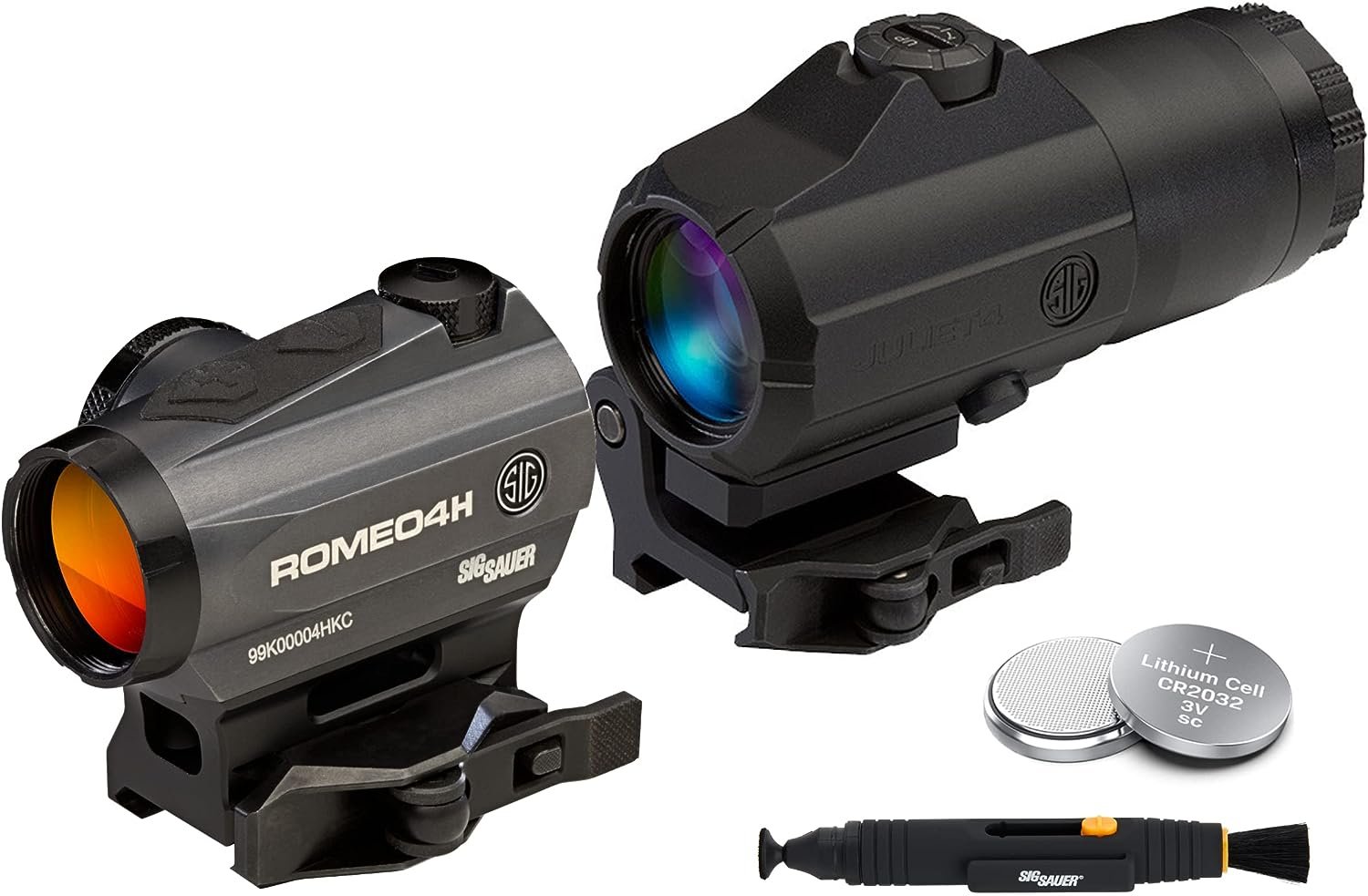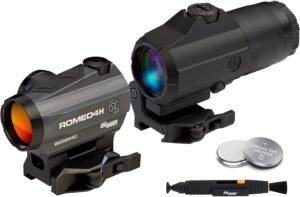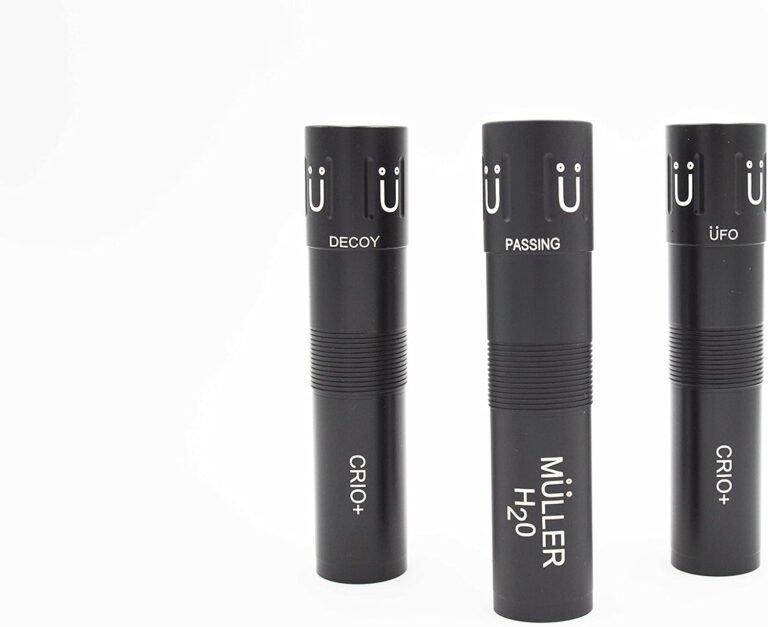Rabbit Hunting Optics – Can You See Me Now?
Rabbit hunting is a popular outdoor activity requiring precision, skill, and understanding of rabbit hunting optics. Optics refers to the instruments used to enhance vision, such as binoculars and rifle scopes, while sighting involves aligning the firearm with the target for accurate shooting. In the pursuit of rabbit hunting, optics, and sighting play a crucial role in increasing efficiency, improving accuracy, and ensuring ethical hunting practices.
Definition of Optics and Sighting
Optics is the branch of physics that deals with light, vision, and the behavior of electromagnetic radiation. In rabbit hunting, optics primarily refers to optical instruments like binoculars and rifle scopes that enable hunters to observe their surroundings more clearly and identify targets effectively. Sighting involves aligning a firearm’s line of sight or aiming point with the target.
It ensures that when a hunter pulls the trigger, their projectile will hit its intended mark accurately. A well-sighted firearm minimizes missed shots or ineffective hits on game animals.
Importance of Optics and Sighting in Rabbit Hunting
The use of proper optics is vital in rabbit hunting due to several reasons. Firstly, rabbits are small creatures known for their elusive nature. They possess excellent camouflage skills that allow them to blend seamlessly into their environment.
UUtilizing binoculars or spotting scopes with appropriate magnification power during scouting sessions or before shooting at a rabbit target helps hunters spot these elusive creatures more easily. Rifle scopes are equally essential since they provide enhanced visibility while aiming at rabbits from various distances.
A high-quality scope allows for better target identification by providing clear images even during low-light conditions or when rabvegetation partially conceals rabbits. Additionally, a properly zeroed scope ensures precise bullet placement, reducing the risk of injuring the animal without achieving a quick, humane kill.
Overview of Optics for Rabbit Hunting
Binoculars
When it comes to rabbit hunting, having a reliable pair of binoculars is essential for spotting rabbits in their natural habitat. Several types of binoculars are suitable for this purpose, each with advantages. First and foremost, compact binoculars are popular among hunters due to their lightweight and portable design.
They are easily carried around the neck or pocket without hindering movement. Moreover, compact binoculars provide a wider field of view, allowing hunters to scan larger areas efficiently.
Another option is full-size binoculars that offer enhanced light-gathering capabilities. These larger models typically have higher magnification power and superior image resolution that aids in identifying rabbits from a distance while maintaining clarity.
While they may be slightly bulkier than compact binoculars, their image quality and detail benefits make them an excellent choice for serious rabbit hunters. When selecting binoculars specifically for rabbit hunting, there are several features to consider.
Firstly, opt for models with a durable construction that can withstand rugged outdoor conditions without compromising performance. Additionally, look for waterproof and fog-proof binoculars to ensure clear visibility even during adverse weather conditions such as rain or mist.
Regarding magnification power, it is recommended to choose binoculars within the 8x to 10x magnification range for rabbit hunting purposes. Higher magnifications might result in a narrower field of view, making tracking fast-moving animals like rabbits more challenging.
Rifle Scopes
While binoculars help identify targets from afar, rifle scopes play an integral role in sighting and accurately hitting rabbits during hunts. Rifle scopes come in various types tailored to different shooting requirements.
One common type is the fixed power scope, which offers only one level of magnification throughout its use. Fixed power scopes are often favored by hunters who engage in close-range rabbit hunting as they provide a wider field of view and faster target acquisition.
Their simple design and robust construction make them reliable choices for rugged environments. On the other hand, variable power scopes allow for adjustable magnification settings, offering more flexibility in different hunting scenarios.
They are particularly beneficial when tracking rabbits at varying distances. Variable power scopes typically range from 3-9x or even higher, allowing hunters to zoom in on targets for clearer sight pictures.
When selecting a rifle scope for rabbit hunting, it is crucial to consider factors such as lens quality, light transmission capabilities, and reticle options. Opting for scopes with multi-coated lenses aids in reducing glare and enhancing image clarity under different lighting conditions.
Additionally, scopes with larger objective lenses (around 40mm to 50mm) facilitate better light transmission resulting in brighter images during low-light situations. Understanding reticles is also important as they assist hunters in aiming accurately.
Reticles offer features like duplex crosshairs or bullet drop compensators that help account for bullet trajectory at different distances. Choosing a reticle that suits your shooting style and preferences will contribute significantly to successful rabbit hunting expeditions.
Understanding Sighting Techniques for Rabbit Hunting
Zeroing your rifle scope
Zeroing your rifle scope is crucial in ensuring accuracy and precision in rabbit hunting. To zero your scope, follow this step-by-step process for accurate shooting.
Begin by setting up a target at a fixed distance, preferably around 100 yards, and ensure it is securely placed. Take a few shots to establish the point of impact on the target.
Then, using the windage and elevation adjustments on your scope, carefully align the crosshairs with the bullet holes on the target. Make gradual adjustments until the crosshairs are perfectly aligned with each bullet hole.
Adjusting windage and elevation on the scope
To adjust windage and elevation on your rifle scope, familiarize yourself with the knobs or dials located on top or at the sides of your scope. Windage adjustment controls horizontal movement while elevation adjustment controls vertical movement.
These adjustments compensate for bullet drift caused by factors such as wind or distance. When adjusting windage or elevation, use one click at a time to make incremental changes until you achieve the desired accuracy.
Remember that each click corresponds to a specific measurement based on your particular scope’s specifications (typically 1/4 MOA per click). Patience while making these adjustments is essential. They require careful observation of shot patterns relative to the desired point of impact.
Estimating Range to Target
In rabbit hunting scenarios where you don’t have access to a rangefinder, estimating range becomes crucial for accurate shooting. You can employ different methods: a) Visual estimation using known objects as references: Familiarize yourself with common objects in your hunting area, such as trees, rocks, or bushes, which you can use as reference points to estimate range.
You can reach a reasonably estimated range by comparing known distances between objects with an unknown distance to your target. b) Using mil-dot reticles or other range-finding reticles: Some rifle scopes come equipped with mil-dot or similar reticles that can assist with estimating range.
These reticles have markings corresponding to specific measurements, enabling you to calculate the range based on the target size in your sight picture. By utilizing these markings and applying basic mathematical calculations, you can estimate the distance to your target more accurately.
Advanced Techniques and Tips for Optics and Sighting in Rabbit Hunting
Shooting from different positions
It is practicing from various positions to enhance your shooting versatility while rabbit hunting. The essential positions include:
1) Prone position: The prone position offers excellent stability, allowing a solid base with maximum contact between the shooter and the ground. This position minimizes body movement and provides a steady platform for accurate shots.
2) Sitting position: Sitting is commonly used when obstacles prevent lying prone or additional elevation is required for better visibility. It offers more flexibility in terms of maneuverability compared to prone shooting.
3) Standing position: While standing shooting may sacrifice stability, it provides greater mobility, especially when tracking or engaging targets on uneven terrain. It requires proper body alignment and controls to maintain accuracy.
Utilizing natural features as shooting rests
Taking advantage of natural features like trees, rocks, or logs as shooting rests can greatly improve stability and accuracy during rabbit hunting. These objects provide support against which you can lean your rifle or even rest it securely for more controlled shots. Ensure the job-chosen objects are stable while avoiding interference with your line of sight.
Accounting for bullet drops at various distances.
Understanding bullet drop is crucial for successful rabbit hunting at different distances. As the bullet travels, gravity gradually pulls it down, causing it to drop from its initial trajectory. To account for bullet drop, you must adjust your aim point accordingly when shooting longer distances.
Familiarize yourself with the ballistics of your ammunition and rifle combination to determine the extent of bullet drop at various ranges. This knowledge will enable you to make necessary adjustments in terms of aiming higher or using holdover points on your reticle.
Adjusting sight picture based on lighting conditions
Lighting conditions can significantly impact sighting accuracy during rabbit hunting. Adjusting your sight picture involves making changes to the brightness or contrast settings on your scope, if available, or simply adapting your focus and visual acuity based on lighting conditions such as dawn, dusk, or heavily shaded areas. Ensuring optimal visibility through proper sight adjustment enhances target acquisition and significantly improves accuracy.
Conclusion
Mastering optics and sighting techniques is essential for successful rabbit hunting adventures. By effectively zeroing your rifle scope and adjusting windage and elevation precisely, you lay a solid foundation for accurate shooting.
Additionally, applying methods like visual estimation or range-finding reticles enables you to estimate the target range without a rangefinder. Further enhancing your skills with advanced techniques such as shooting from different positions, utilizing natural features such as shooting rests, accounting for bullet drops at various distances, and adjusting sight pictures based on lighting conditions expands your capabilities in the field.
Remember to prioritize safety when using optics and sighting devices during rabbit hunting. By honing these skills and adhering to safety protocols while embracing the excitement of rabbit hunting adventures, you can elevate the enjoyment of this sport and achieve greater success in bagging those elusive rabbits.








